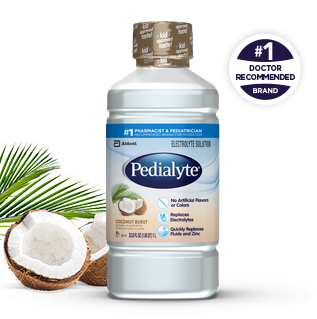Pedialyte is perfectly safe to give your cats, provided that it is unflavored and given in moderation. It may be ideal for cats recovering from diarrhea and vomiting and for cats with chronic kidney disease. As with anything, moderation is key, but Pedialyte is non-toxic and will cause no harm to your feline.
What can I give my cat for dehydration?
This depends on the level of dehydration. Examine the elasticity of the skin on your cat’s neck and the area above its shoulder blades for indications of dehydration. If the skin takes longer than a minute or two to return to its normal state, the dehydration is probably more severe than what can be treated with an oral rehydration solution. In these situations, your cat’s veterinarian should administer injectable fluids and identify the cause of their dehydration.
When there isn’t a visible “skin tent” and you want to give some basic support to stop further electrolyte loss and dehydration, Pedialyte is safe to use in moderation for brief periods of time, usually for symptoms that last less than 12 to 24 hours.
Is My Cat Dehydrated?
Unfortunately, it can be difficult to diagnose dehydration in cats, but if they are vomiting or have diarrhea, they can benefit from small amounts of Pedialyte. A quick and simple test for dehydration is to grab your cat’s neck skin between their shoulders and gently pull it up and then release it. Their skin should go back to normal quickly and easily, but if it doesn’t, they are likely mildly dehydrated. Also, check their gums, which should be moist to the touch and if pressed gently, should go back to their normal pink color immediately.
Other symptoms of dehydration include:
- Lethargy
- Dry mouth and eyes
- Panting
- Elevated heart rate
- Loss of appetite
- Change in character
About Pedialyte for Cats

In homes with young children, Pedialyte is a popular over-the-counter oral rehydration solution that helps replenish electrolytes and prevent dehydration when vomiting or diarrhea is causing fluid and electrolyte losses. Important electrolytes that Pedilalyte contains include sodium, potassium, and chloride.
Pedialyte can also be used by adults for the same purposes or as a lower-sugar substitute for sports drinks like Gatorade or Powerade, which usually have higher sugar content.
The most common packaging for Pedialyte is a one-liter liquid container, but it is also available in powder form for mixing. Pedialyte comes in a wide range of subtypes for use in sports, immune support, and other applications.
Cats can use Pedialyte, but usually only in mild cases of illness and with some moderation. Most veterinary professionals advise using unflavored classic Pedialyte in these situations.
FAQ
What can you give a cat for dehydration?
How much Pedialyte can a cat have?
Is there an electrolyte drink for cats?
How do you make Pedialyte for cats?